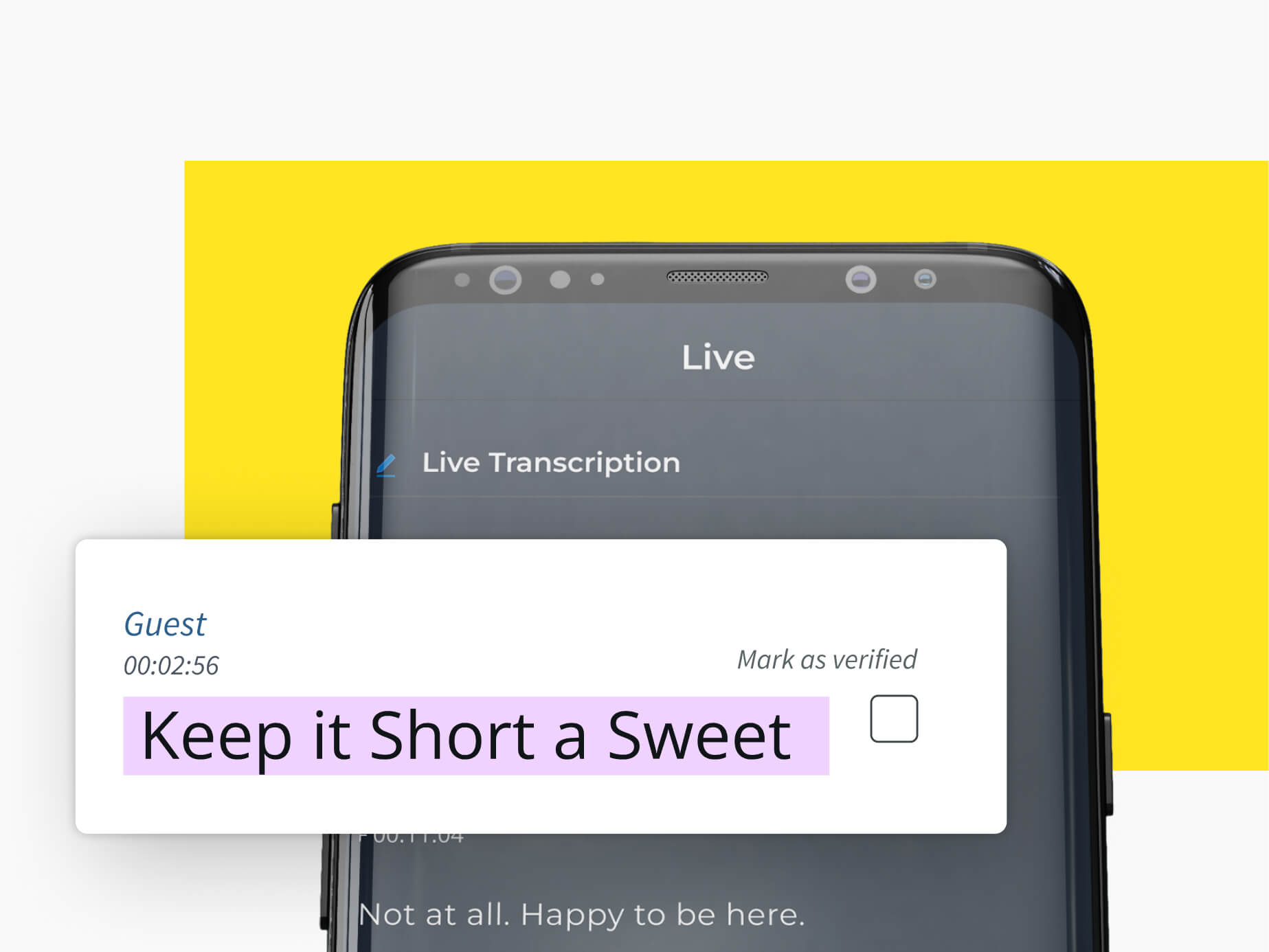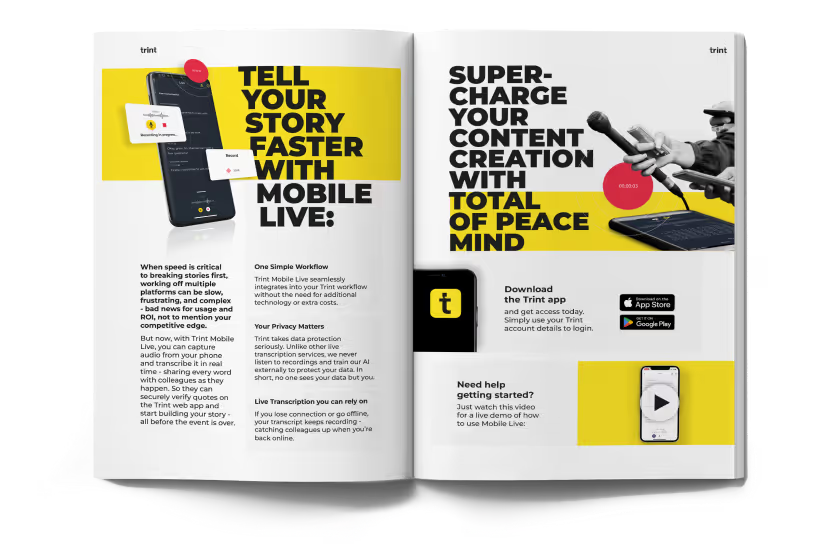
Editors are buried in pitches daily, so yours needs to pack a punch. Something that's relevant, unique and just too good to pass up. In this guide, we’re breaking down everything you need to know to craft a pitch that gets noticed. Whether you’re a pro looking to up your game or a freelancer hustling to get in the door, these tips and examples will make your pitches stand out in a busy inbox.
Cover the basics right away
Nailing the basics is key to grabbing an editor’s attention right off the bat. Kick things off with these steps to make your pitch impossible to ignore.
- Subject line: Start with a strong subject line. Keep it clear, direct and relevant.
- Introduce yourself: Briefly introduce yourself, including any relevant credentials. For example: “Hi [Editor’s Name], I’m [Your Name], a freelance journalist with experience covering environmental issues.”
- Open with a hook: Start with a sentence or two that grabs the editor's attention. This could be an intriguing fact or question that makes them want to keep reading.
- Explain the story: In a few sentences, outline your story idea.
- Emphasize your unique angle: Highlight what makes your story different. For instance, if you're pitching a story about climate change, emphasize a fresh perspective, unique interview subjects or a local angle.
- Outline your approach: Show them that you've thought through the details. Briefly explain how you'll approach the story, including potential sources, relevant data and any visuals you plan to include.
- Explain why it's relevant: Relate the story to the publication's readers.
- Offer a call to action: End with an invitation to discuss the story further.
You can use this pitch template as a starting point when pitching to an editor, but feel free to tailor your response to your subject matter and the publication. If it feels too wordy, trim it down — snappier pitches can pack a bigger punch!
Pitch examples
Want to see how this template looks in action? Below are five pitch examples you can use as inspo when approaching editors or publications. Remember, if you're finding it tricky to keep things concise or compelling, you can always write what you want to say, and use AI writing tools like Gemini to refine it and make it snappier.
Example 1
Subject Line: Pitch: How Microplastics in Drinking Water Are Impacting Human Health
Pitch: Hi [Editor’s Name],
I’m [Your Name], a freelance journalist specializing in environmental health.
How would you feel if the water you drink every day contained microplastics — tiny plastic particles with uncertain health impacts? It's a disturbing thought, and it's not just a matter of contamination; it's a looming public health crisis with significant gaps in research and regulation.
My feature would delve into cutting-edge studies that reveal how microplastics are entering our bodies through the water we drink, and I’d explore efforts to push for updated water quality standards in response.
The personal and immediate implications of microplastics are a largely unexplored angle that will hit home for your readers. I'd bring this narrative to life through exclusive interviews with leading scientists, real-world examples, and an exploration of what the future holds if we fail to take action.
This timely issue has far-reaching implications and with [Publication’s] focus on environmental health, I believe it would resonate well with your readers.
Please let me know if you’d be interested in discussing further!
Best regards,
[Your Name]
[Your Contact Information]
Example 2
Subject Line: Pitch: Exclusive: How Your Personal Information is Being Sold Without You Knowing
Pitch: Hi [Editor’s Name],
I’m [Your Name], a freelance journalist focusing on tech and privacy issues.
Did you know that your personal data is being bought and sold without your consent?
The business of data brokers has exploded, and your digital footprint is now a valuable commodity for companies you’ve never even heard of.
In my feature, I’d take a deep dive into the shadowy world of data brokers — the companies profiting off your private data. The piece will explore how your personal information is collected, bought, and sold behind closed doors, and why new regulations can’t keep up.
I’ve got an exclusive interview lined up with [Interviewee’s Name], a hacker-turned-whistleblower, who’s going to shed light on how data is traded and who’s benefiting from it. Through their insider knowledge, I’ll uncover how easy it is for anyone to access and trade the data you thought was private.
Given [Publication's] focus on tech, privacy, and consumer rights, I believe this story would deeply resonate with your audience. It's an urgent eye-opener about the hidden ways their data is being exploited.
Thank you for your time and consideration. Please let me know if you're interested in discussing further!
Best regards,
[Your Name]
[Your Contact Information]
Example 3
Subject line: Pitch: How AI Influencers Are Taking Over Social Media
Pitch: Hi [Editor’s Name],
I wanted to introduce myself. My name is [Your Name] and I'm a freelance journalist who frequently explores the intersection of tech and culture.
Does it feel like your social media feed is flooded with AI content recently? In 2025, AI-powered personalities aren’t just a novelty — they're legitimate influencers reshaping the way we consume content, follow brands, and even interact with celebrity culture.
I’d like to pitch a feature on the growing impact of AI influencers, from virtual models to fully-fledged digital celebrities. This piece will cover how these digital personalities are being built, how they’re influencing everything from fashion to mental health, and the legal and ethical questions they’re raising about authenticity in the digital age.
I’ve already secured an interview with one of the top AI developers from a leading tech company to get an inside look at what’s next.
With [Publication’s] focus on trends and innovation, I think this would be a fascinating read for your audience. I’d love to discuss further if you’re interested!
Best regards,
[Your Name]
[Your Contact Information]
Example 4
Subject Line: Pitch: Shoplifting on the Rise? 1 in 4 Britons Say They’ve Seen It Happen
Pitch: Hi [Editor’s Name],
I’m [Your Name], a freelance journalist focused on consumer trends and social issues. My recent piece on [briefly mention recent story topic] was published in [Publication Name].
A new study has revealed that nearly one in four Britons have witnessed shoplifting in the past year. With retail theft on the rise, shopkeepers are feeling the strain, and some major chains are now investing in enhanced security measures to tackle the problem.
I’d love to pitch a feature exploring this growing issue, diving into what’s behind the surge in shoplifting, how it’s impacting retailers, and what’s being done to address it. I’ll include insights from retail experts, police, and everyday shoppers who’ve witnessed these incidents firsthand.
With concerns about rising costs and increased pressure on retailers, this piece feels especially timely. Would you be interested in discussing further?
Best regards,
[Your Name]
[Your Contact Information]
Example 5
Subject Line: Pitch: Survey Reveals Why Gen Z is Ditching Alcohol for ‘Sober Curiosity’
Pitch: Hi [Editor’s Name],
My name is [Your Name] and I'm a freelance journalist covering lifestyle trends and social issues.
I’ve just completed a survey with over 1,000 Gen Z respondents, and the results reveal a fascinating shift — 64% of young adults in the UK are actively reducing or cutting out alcohol entirely. This trend, driven by health consciousness, social media influences, and a growing focus on mindfulness, is reshaping the way this generation approaches socialising.
I’d love to pitch a feature based on this exclusive data, exploring the why behind Gen Z’s changing relationship with alcohol. The story will dive into how this generation is redefining socialising, how brands are responding to the surge in demand for non-alcoholic options, and what this cultural shift means for the future of nightlife and wellness.
The findings are timely, especially as the non-alcoholic beverage market is set to experience a surge in popularity over the next few years. Would you be interested in covering this piece? Feel free to drop me a message with any questions.
Best regards,
[Your Name]
[Your Contact Information]
Tailor your pitch to the publication
Muck Rack's State of Journalism Report reveals that editors often reject pitches simply because they lack relevance or personalization. Avoid that trap by researching the publication inside and out — know its style, tone and audience so you can tailor your pitch to hit home.
Some publications will post their style guides online. If not, take a look at their published articles to get a feel for their tone of voice and audience. This extra effort shows editors you’re serious, increasing your chances of landing the story.

Get on social media
Building connections in journalism is essential, so make sure you invest time in the freelance and journalism community. Follow other freelancers on socials, join industry events and don’t be shy — those connections often lead to referrals and even collaborations. Plus your peers might just share what's working in their pitches so you can fine-tune your own approach.
Similarly, make sure you're following editors and journalists on social media platforms like X, Bluesky or LinkedIn. Not only does it keep you plugged into what’s trending, but you might get some gold pitching tips straight from the pros. Some journalists share insights on what they’re looking for in a pitch, giving you a head start. They might even highlight trending topics and story types they’re interested in, so you can jump on it while it’s hot.
Pitch a story, not an idea
When pitching to an editor, rather than suggesting a vague idea, paint a clear picture of the story you want to tell. Outline the angle, who you'll speak to and why it matters now. You might already have a strong quote you can reference in your pitch to reel the editor in. This makes it much easier for the editor to visualize the final piece and shows you're serious about delivering a well-thought-out story. A concise but clear narrative gives editors confidence in your ability to follow through.
Remember, transcription software can help you get accurate quotes and data, fast, so it's worth using if you want to pitch your story before anyone else. You can also view past notes and transcripts if you're looking for a fresh idea.
Editors look for timely, unique angles so be clear about why your story matters now and make sure you communicate it in your pitch. Ask yourself "Why now?" or "Why me?". Can you offer a fresh perspective on a trending topic? Can you highlight an underreported issue? Editors love a unique viewpoint that other outlets haven't covered. Enthusiasm can be persuasive, so make sure you convey your interest in the story. If you're invested, they will be too.
Keep it short and sweet
Remember, editors are just as short on time as freelancers, so they'll likely be skimming through their emails. Make their job easier by making your pitch straightforward to read, including just the necessary information.
Editors want to know the five Ws — the who, what, when, where and why. Just a couple of sentences is enough to get your point across without sending them to sleep. A good, snappy pitch should be under 300 words, so avoid filler words and get straight to the point to keep them engaged. Using an AI summarizer can help you highlight key points quickly without losing any punch. You could even summarise an interview to use in your pitch to show off your unique angle and research.

End with a call to action
Wrap up your pitch by inviting the editor to engage with you. Ask if they're interested in hearing more or if they have any questions. This shows you're open to their input and opens a dialogue that makes it easier for them to respond.
If they're keen to collaborate on your idea, writing tools like Trint Editor make this easy. You can grant permission for editors to access and comment on documents and transcripts to speed up the writing and editing process.
How to follow up a pitch
If you don't hear back after a reasonable amount of time, don't be afraid to send a polite follow-up to put your pitch back in the spotlight. Wait at least a week after your initial pitch before doing this and acknowledge that they're busy and you appreciate their time. Drop a quick reminder of the story and why it’s a good match for their publication.
Follow-up pitch template
Subject: Follow-Up on My Pitch: Exploring Microplastics in Drinking Water
Hi [Editor's Name],
I hope you're doing well! I wanted to follow up on my recent pitch regarding [topic]. Given the growing concerns surrounding this issue, I believe it could resonate strongly with your readers at [Publication Name].
If you have any questions or would like to discuss this story further, please let me know. I’d be happy to provide additional insights or sources.
Thank you for considering my pitch. I look forward to hearing from you.
Best regards,
[Your Name]
[Your Contact Information]
---------------------
But when is enough enough? According to data from Cision, most journalists recommend following up at least once, but only 10% recommend following up more than once. In this industry, persistence isn't always key, and following up too much could land you on the blocked list!
Crafting the perfect pitch is more than just coming up with a great idea — it’s your opportunity to prove why your story needs to be told. By customizing your approach and using AI transcription tools like Trint to streamline your research, you’ll shape a pitch that gets straight to the heart of the story. Book a demo today to find out how Trint can transform your pitching game.
Don't forget to check out our Creator Hub for even more essential media tips and tricks. New to the industry? Take a look at our glossary of journalism terms to help you pitch like a pro.

DON'T take our word for it
Download our eBook, Telling Stories Faster With Trint, and hear how Trint is making content creation faster, easier and, most importantly, painless for newsrooms across the world.
Download








